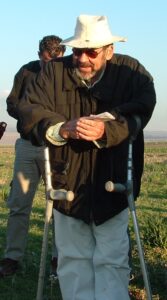
Adam Zertal. By Hanay – Own work, CC BY-SA 3.0, https://commons. wikimedia.org/w/index.php?curid=11902179
After 12 years of surveying and excavating in the land allotted in the Bible to the tribe of Manasseh, it is now possible to suggest new ideas on the emergence of Israel in Canaan, beginning at the end of the Late Bronze Age (13th century B.C.E.a) and continuing into Iron Age I (1200–1000 B.C.E.).
Using the results of a detailed archaeological survey and one large-scale excavation on Mt. Ebal, and with the aid of recent statistical models and computer-generated analyses, combined with a reexamination of Biblical texts and results achieved and accumulated in neighboring areas, we can now treat crucial questions such as- Where did the Israelites who first appear in the land of Canaan come from? What path did their settlement take? What was their relationship to the Canaanite population? How did their religion develop?
These are some of the most controversial issues currently being debated by Biblical archaeologists and Biblical historians. In the last 50 years or so, three different basic models have been proposed for Israel’s emergence as a people in Canaan.
Read the rest of Israel Enters Canaan—Following the Pottery Trail in the online Biblical Archaeology Society Library.